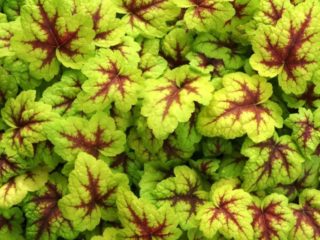Content
Elecampane (Inula Hirta or Pentanema Hirtum) is a herbaceous perennial from the Asteraceae family and the Pentanema genus. It is also called coarse-haired. It was first described and classified in 1753 by Carl Linnaeus, a Swedish naturalist and physician. People call the plant differently:
- divukha, devil, sidach;
- ammonia, dry mint, adonis;
- heaps, dried tops;
- tea herb, sweet potion.
In addition to its undoubted decorative qualities, this sunny flower has healing properties and is used in traditional medicine recipes.
Botanical description of the plant
Elecampane rough is a flowering perennial, the height of which does not exceed 25-55 cm. The stems are straight, ribbed, single, olive, dark green and reddish-brown in color. Covered with thick, hard reddish-whitish hair.
The leaves are dense, leathery, oblong-lanceolate, green in color. The lower ones raise the edges, folding lengthwise into a kind of “boat”. The upper leaves are sessile. Reaches 5-8 cm long and 0.5-2 cm wide.The surface is finely folded, with a distinct network of veins, rough, covered with prickly hairs on both sides. The edges of the leaves may be smooth, with small teeth or cilia.
Elecampane blooms in the first half of summer, from June to August. Flowers in the shape of baskets are single, in rare cases - double or triple. Relatively large, 2.5-8 cm in diameter, with numerous golden-lemon marginal arrow petals and a bright yellow, reddish, honey-colored core. The marginal petals are reed, and the inner petals are tubular. The involucre is cup-shaped, fleecy-rough, with narrow elongated leaves. The reed petals are more than 2 times the length of the involucre.
It bears fruit with brown, smooth achenes of a cylindrical ribbed shape, with a tuft, up to 2 mm long. They ripen in late summer or early autumn. The root of the plant is powerful, woody, located at an angle to the surface.

Blooming elecampane looks like golden suns hovering over the green grass
Distribution area
The favorite habitats of the perennial are the edges of deciduous forests, meadows and clearings overgrown with shrubs, steppe zones, and the slopes of wet ravines. Prefers fertile soils with a pronounced alkaline reaction. Grows abundantly throughout Europe, Ukraine and Belarus, Western and Central Asia. In Russia, elecampane grows in the black earth zones of the European part, in the Caucasus and Western Siberia. Very rarely found on calcareous soils of the Non-Black Earth Region, along the banks of large rivers.
Medicinal properties of rough elecampane
For medicinal purposes, the above-ground parts of the plant - stems, leaves and flowers - are used.The collection of raw materials is carried out during flowering, when rough elecampane is saturated with biologically active substances. The collected grass is tied into bunches and dried in a well-ventilated, shaded place. Or they are crushed and placed in an electric dryer at a temperature not exceeding 40-45 degrees.
Elecampane rough has the following properties:
- excellent antimicrobial and antiseptic agent;
- promotes skin regeneration and wound healing;
- hemostatic and astringent;
- mild diuretic;
- promotes increased sweating.
Infusions and decoctions of the herb elecampane are used in the following cases:
- for colds, fever, elevated temperature;
- in the form of baths and lotions for dermatitis, scrofula, allergic rashes;
- with childhood rickets.
Cooking method:
- 20 g of dried herb pour 200 ml of boiling water;
- Cover tightly, leave for 2 hours, strain.
Drink 20-40 ml 3-4 times during the day, 30 minutes before meals.

Crushed leaves of elecampane can be applied to cuts and abrasions as a wound healing agent.
Restrictions and contraindications
Elecampane has a number of restrictions when taken orally:
- Do not use decoctions during pregnancy and breastfeeding;
- children under 7 years of age;
- severe cardiovascular diseases;
- kidney stones, renal failure.
When using infusions of the plant in the form of baths and lotions, it is necessary to monitor the reaction of the skin. If an allergic rash appears, stop the course immediately. Before starting treatment, it is advisable to consult a doctor.

Elecampane is often planted in gardens and flower beds as an unpretentious decorative flower.
Conclusion
Elecampane is a low perennial whose flowers are a rich sunny yellow. In the wild, the plant is widespread in Europe and Asia; in Russia it is found south of the latitude of Nizhny Novgorod, in the Caucasus mountains and in Siberia. It has pronounced medicinal properties and is used in folk medicine as an anti-cold remedy, as well as for the treatment of skin rashes of an allergic nature.








